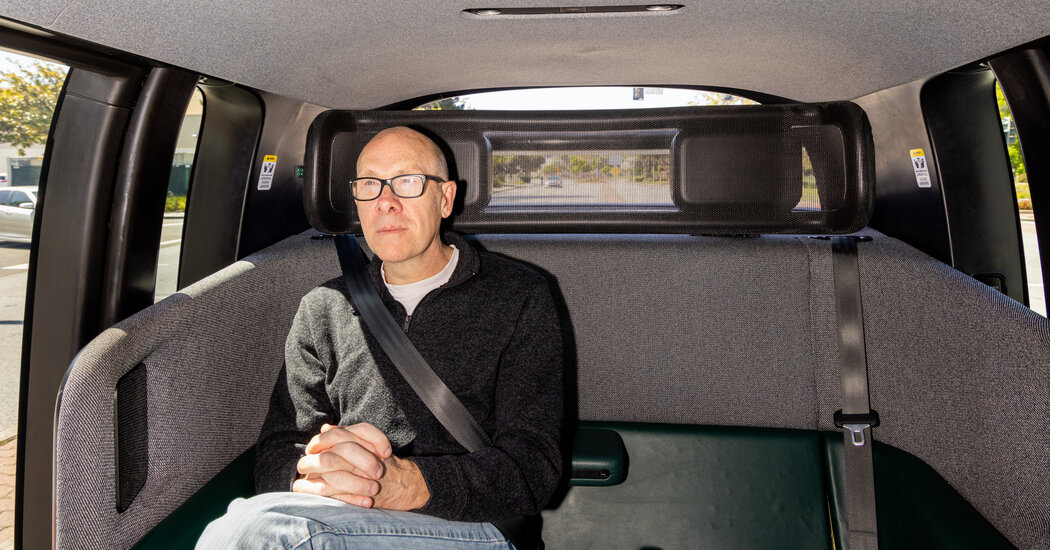An immersive article shows readers what a New York Times reporter has tracked for nearly a decade: Robot taxis still need human help.
Times Insider explains who we are and what we do and delivers behind-the-scenes insights into how our journalism comes together.
I took my first ride in a self-driving car nearly a decade ago. Like most people who experience this brave new world, I felt a deep sense of awe that machines had mastered a skill that once belonged solely to humans.
Then I remembered I was a reporter.
Over the next 10 years, first at Wired Magazine, now at The New York Times, I covered the high-speed race to bring self-driving cars into the lives of everyday Americans. And during that time it became increasingly clear to me that although self-driving cars were shockingly nimble — indeed awe-inspiring — they could not yet match the power of the human brain. They still can’t.
My years of reporting culminated with an article my colleagues and I published last week about how driverless cars get help from humans.
Thanks to the multimedia talents of Jason Henry, Ben Laffin and Rebecca Lieberman, the article shows that although today’s robot taxis do not have drivers behind the steering wheels — some don’t even have steering wheels — they still lean on the good sense of people like you and me.
In April, my fellow reporter Yiwen Lu and I visited a command center in Foster City, Calif., operated by Zoox, a self-driving car company owned by the tech giant Amazon. Like other robot taxis, the company’s self-driving vehicles sometimes struggle to drive themselves, so they get help from human technicians sitting in a spacious room in the command center.
Sometimes, a technician lends a helping hand to a robot taxi hundreds of miles away.
If a Zoox car is unable to navigate a construction zone it has not seen before, for instance, a technician at the command center receives an alert. Then, using the computer mouse to draw a line across a digital road map on a computer screen, they give the car a new route to follow around the construction zone.
